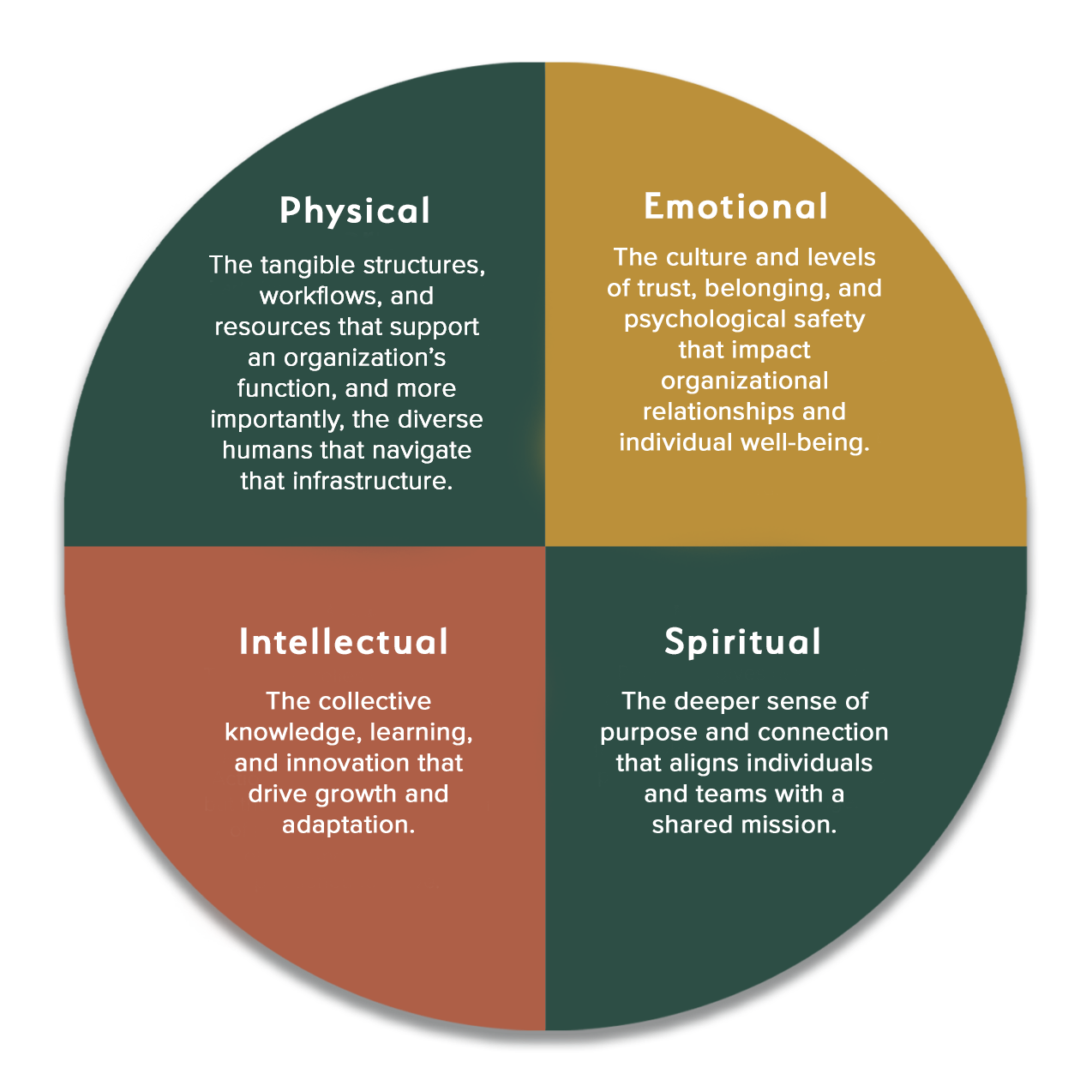About Us
CEO Cardozie Jones founded True North on the belief that discovering our ‘true north’ requires curiosity, continuous learning, and trust in those we work alongside. This commitment drives the unifying strategies, effective solutions, and meaningful impact for the organizations and teams we partner with.

Organizations thrive when people do.

What We Believe
At True North, we believe organizations thrive when people do. This is the essence of organizational health: environments where individuals and teams feel valued, supported, and connected as a result of intentional practices that prioritize care, cultivate trust, and align people with purpose.
Our Approach – Elemental Design™
Elemental Design™ is our signature framework—a trademark approach to organizational health that we’ve developed through years of experience working at the intersection of people, systems, and culture. It recognizes that an organization is more than its structure or policies—it is a dynamic and interdependent system shaped by the physical, emotional, intellectual, and even spiritual well-being of its people. Just as individuals thrive when all aspects of their well-being are nurtured and in balance, so too do organizations.
By addressing these four dimensions, we help organizations cultivate resilience, alignment, and sustainability, ensuring they can navigate challenges while remaining true to their values and aspirations.
Our Values
Illumination
We can only care for what we can see. Illumination requires us to do the work of making the unseen visible—not just to some, but to all.
This includes the parts of our history, relationships, and beliefs that may feel uncomfortable to face. But we believe transformation begins when we bring the hidden into the light with care, engage what is present, and use that insight to imagine what is possible.
Creativity
Imagining a world we haven’t yet seen takes courage and imagination.
It means refusing to settle for systems that simply repackage old harms in new language. Our work embraces play, experimentation, and iteration. We honor the boundaries of our work not as limitations, but as generative containers—spaces where bold, imperfect, human-centered ideas can take shape.
Joyful-Orientation
Our work comes from, moves through, and works toward a place of joy.
We don’t mean joy as in extreme happiness or pleasure, but the kind that gives us permission to show up as complex, messy, silly, sad, and whole people. For us, joy is a belief that tomorrow has the potential to be better than today and that nothing is too heavy if we carry it together.
Grace
Grace is space—the space to grow forward, fall backward, and pivot when necessary.
With grace, we are granted the permission to take risks, be ambitious, and show up vulnerably even with the fear that we might fall short of our values. But mistakes are a necessary part of our learning and growth, and grace–accompanied by accountability–allows us to be a community that is both compassionate and forward moving.
Interdependence
No one can thrive alone.
We’re often taught to value independence above all else—celebrating individual success while overlooking the people, systems, and histories that make it possible. This mindset can unintentionally lead to cultures of isolation and exclusion, even when our intentions are good. Interdependence reminds us that our well-being is tied to one another’s—that accountability, care, and collaboration are necessary for lasting impact. It calls us to shape systems where everyone can grow, contribute, and belong—together.
These values don’t just shape how we work—they reflect who we strive to be, and who we are called to become to help build the world we all deserve. We share them with our clients as a compass for our collective work, returning to them—imperfectly but consistently—as a guide for growth, alignment, and impact.

